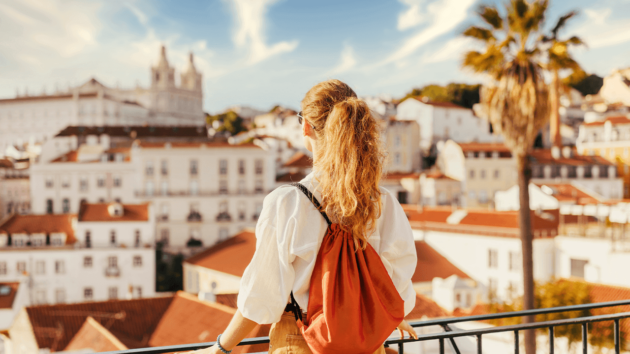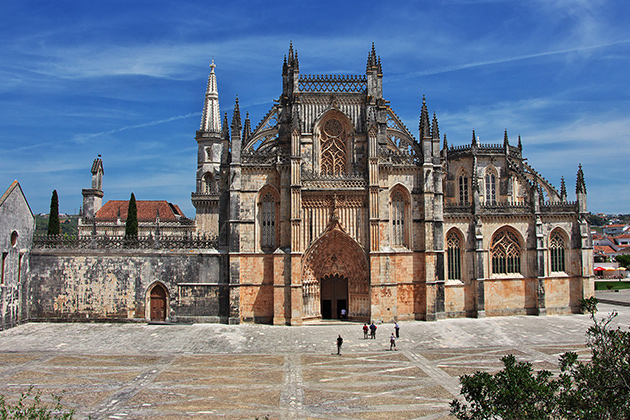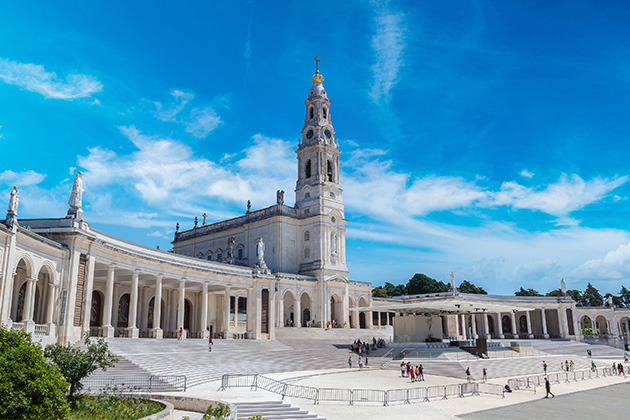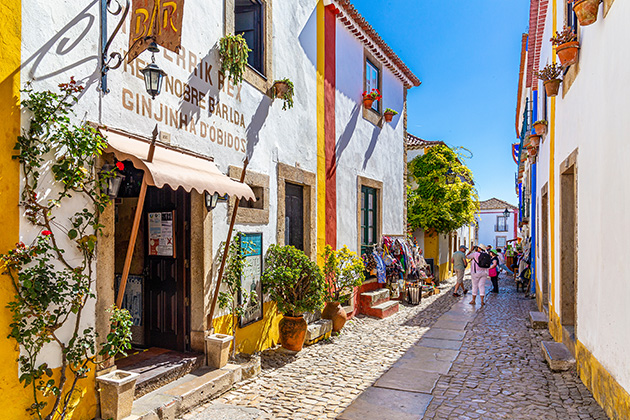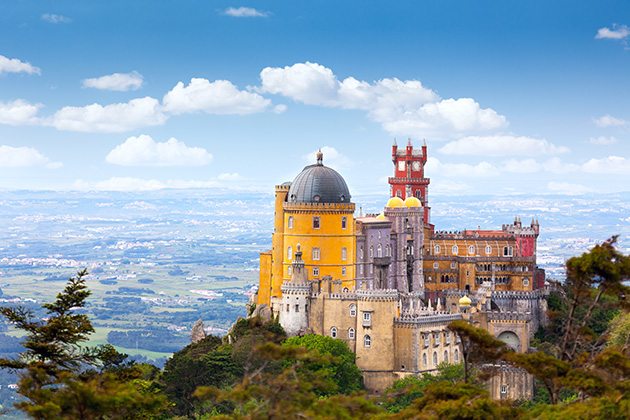
What to do in Sintra? There is so much to say that you’ll probably have to plan a second trip. But here are our suggestions.
A history lost in the mist of time
The history of Sintra goes way back and there are traces of settlements from before the Neolithic period. The fact is that the town has played a role in a variety of moments throughout the history of Portugal.
Roman writers and philosophers called it the Mountain of the Moon. Ptolomy took that to be its name and Arabian geologist Al-Bakr described it as “permanently covered in a mist that never clears”.
Around this time, in the X Century, it was known as Shantara, or Xintara and its Moorish castle was conquered by D. Henrique in 1109. Only in 1147, however, following the conquest of Lisbon, was Sintra finally integrated into Christian lands, by Afonso Henriques, who raised it to the status of town in 1154.
Since then Sintra grew to occupy a prime place in the Portuguese realm, not only as a place of refuge and relaxation, but also of meditation and reflection.
Sintra’s landmarks
There are so many landmarks in Sintra that you’d best make a selection of the ones you really don’t want to miss and plan your visit accordingly so that you can get the most out of your trip.
1. Moorish Castle
Built by the Muslims, it boasts a privileged view over the Atlantic, the wetlands and the Sintra mountain that it sits atop of. It was a crucial element in the defense system of the surroundings and helped secure access to Lisbon from the sea. Occupied by the Moors until 1147, it eventually fell to D. Afonso Henriques. It was restored by D. Fernando II in the XIX Century and is an irreplaceable part of Sintra’s cultural landscape, that was classified as World Heritage by UNESCo in 1995.
Moorish castle
Opening hours: From 09.00 to 18.30 (last admission at 18.00)
Tickets: From 6.50€ to 8.00€
2. Sintra National Palace
This is the oldest palace in Portugal, with over a thousand years of history under its roof. Almost every single Portuguese King and Queen visited it, making it an essential part of Portugal’s collective identity.
With different ages came different styles of architecture, but it is the Gothic and the Manueline that most stand out, as well as the Mudejar.
Both the palace and the surrounding town and territory of Sintra were granted to Queen Isabel, the Saint, by King D. Dinis. It remained in the hands of the crown and from that day forth the Queen became the sole beneficiary of its income.
This was also where D. Afonso VI spent his final nine years – after a six-year exile in Angra do Heroísmo, in the Azores – locked up in the room that still bears his name. With the fall of the Monarchy in 1910, the palace ceased to be a Royal residence, the last royal to live there was the Queen mother D. Maria Pia, who left directly for exile.
That same year the palace was classified as a National Monument, but would only be opened to the public in the third decade of the XX Century.
Sintra National Palace
Opening hours: From 09.00 to 18.30 (last admission at 18.00)
Tickets: From 8.50€ to 10.00€
3. Pena Palace
One of Sintra’s most charming landmarks, and definitely worth a visit, despite the fact that there is so much else to see.
The history of this palace goes back to the XII Century, when a Chapel was built on the site, dedicated to Our Lady. D. Manuel I had a Royal Monastery erected, which was levelled by the 1755 earthquake, although it continued to serve its purpose until it was eventually abandoned in 1834, when the monastic orders were expelled from the country.
Prince Fernando of Saxe-Coburg and Gotha, consort of Queen D. Maria II, fell in love with Sintra and later purchased the ruins of the monastery and had the palace built. It was designed by Baron Wilhelm Ludwig von Eschwege. The park already had a set of sinuous trails that led to particular points with stunning views.
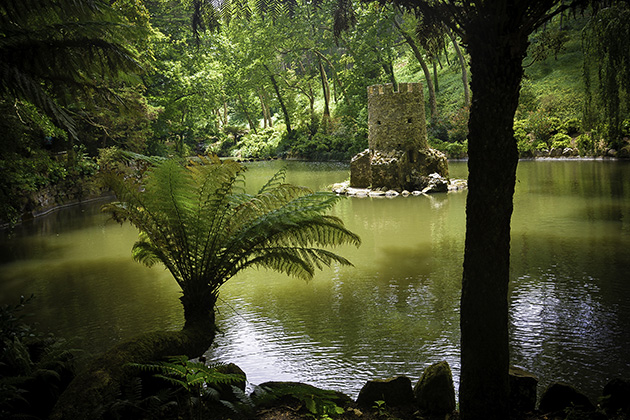
Currently it features flora from all the different continents, spread out over 85 hectares, making it the most important arboretum in Portugal.
The last residents were Queen D. Amélia of Orleans and King D. Carlos I. The Queen was in the palace when she was informed of the proclamation of the Republic, on 5 October, 1910. The highlights in the palace are the Stag Room, the Saxe Room, the Noble Room, King D. Carlos’ office, the Queen’s terrace, the Manueline Cloisters, the Smoking Room, the Visitors Room and the Passage Rooms.
Pena Palace
Opening hours: From 09.00 to 18.30 (last admission at 18.00)
Tickets: From 12.50€ to 14.00€
4. Queluz National Palace
The building that would go on to become the Queluz National Palace dates back to 1654 when king D. João IV created the Infantado House, which D. Pedro III would later transform into the magnificent monument we can see today.
The Queluz Palace would become a permanent residence for the Royal Family after a fire destroyed the Ajuda palace in 1794 and continued to serve that function until the Royals left the mainland for Brazil, after which it ceased to be the spot of celebrations and golden days that it had been until then.
The highlights are the ornate Throne Room and Ambassador’s Room, as well as the gardens, with their classical mythology decorations.
The palace gardens include the Portuguese School of Equestrian Arts which promotes the teaching, practice and development of traditional Portuguese horsemanship and boasts the only library in Portugal entirely dedicated to the subject.
Queluz National Palace
Opening hours: From 09.00 to 18.00 (palace) and to 18.30 (gardens) (last admission at 17.30)
Tickets: From 8.50€ to 10.00€ (Palace and gardens)
5. Quinta da Regaleira
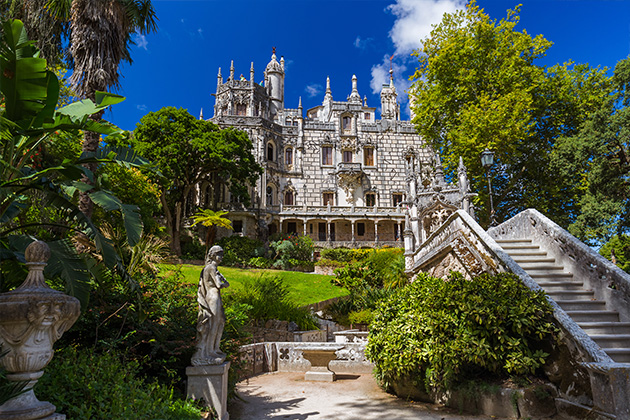
Located on the side of the Sintra mountain, very close to the town centre, the Quinta da Regaleira estate was named a building of public interest in 2002 and is also part of the world heritage cultural landscape.
It was designed by Luigi Manini, who built the palace, the gardens, the ponds, the caves and incorporated all the alchemist symbology that is common to masons, templars and rosicrucians, in a combination of Romanic, Gothic, Renaissance and Manueline styles.
Quinta da Regaleira
Opening hours: From 10.00 to 18.30 (last admission at 17.30)
Tickets: From 5.00€ to 10.00€
6. The Countess d’Edla’s chalet and garden
The chalet is located in the Pena Park and was designed by D. Fernando II’s second wife, who he married after being widowed and seeing his son D. Luís take the throne. It is a romantic building, inspired by the Alpine chalets that were widely appreciated at the time.
The Countess d’Edla, a title she earned shortly before marrying, was an opera singer who had come to perform in the São Carlos Theatre in Lisbon and ended up winning the royal widower’s heart. The marriage took place soon after, although it was never well received, and the couple would take refuge in Sintra, dividing their time between the Pena palace and the chalet.
The Countess d’Edla’s chalet and garden
Opening hours: From 09.00 to 18.00 (last admission at 17.30)
Tickets: Included in the ticket for the Pena Palace and Park
7. Seteais Palace
This palace was built on the orders of Consul Daniel Gigldemeestre, in 1783, and belonged to the Marquis of Marialva, amongst other noblemen, until it was taken over by the State in the 40s. It is a reference in terms of architecture and boasts over 2.000 decorative items.
Currently it is part of the chain of luxury Tivoli hotels and has received many illustrious guests, such as British author Agatha Christie. Its gardens are famous for being meticulously cared for and it offers a fantastic view and an unforgettably relaxing atmosphere.
Tivoli Palácio de Seteais Sintra Hotel
Rua Barbosa du Bocage, 8
2710-517, Sintra
Tel. 21.9233400
Sintra’s beaches
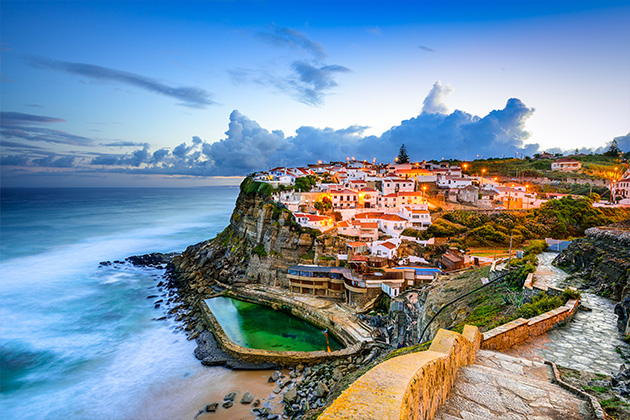
So many, so beautiful! One of the best things to do in Sintra is enjoy its beaches. From Praia Grande to Praia das Maças, Azenhas do Mar and, for the more adventurous, Praia da Ursa, not to mention Magoito, Adraga and São Julião. These are some of the best beaches that Portugal has to offer, with great variety of size, landscape and sports, such as surfing, which is very popular in Praia Grande.
Sintra on the move
There are lots of activities you can enjoy to discover the Sintra mountain, which is part of a natural park, but that’s not all. You’ll need more than an afternoon to discover the mountain’s hiking trails, but there are also lots of sporting activities that you can enjoy.
The town council has plenty to offer, for all levels, so whether you like hiking, BTT, rock climbing, mountain rappel or bodyboarding, there is something for you on the website.
Sintra: what not to miss
If you like taking in the sights, then your best choice is to catch the tram that connects Sintra to Praia das Maçãs, in Colares. It only runs during the summer, but it is worth the wait. In Colares make sure to visit Cabo da Roca, the westernmost point of continental Europe, for an unforgettable view.
In the mountain proper you can go and see the Capuchos Convent, that used to belong to the Order of St. Francis, where you can get an idea of the simple life the Franciscans led. Nearby, on the old hunting grounds of D. Fernando II you can surprise the little ones by taking them on a donkey ride (children up to 12 get to ride and adults lead), provided by the Donkey Preservation and Valorisation Association’s donkey reserve.
Don’t miss out on a trip to Monserrate park, which was designed by XIX Century English industrialist Francis Cook and now includes luscious gardens with species from all over the world as well as a palace that is a tribute to romantic architecture.
From the summit of the Sintra Mountain you can take the trail to the Peninha Shrine, a hermitage and a XX Century romantic palace from where you can see all the way to the Espichel Cape, the Arrábida Mountain and, on clear days, Carvoeiro Cape and the Berlengas Islands. If you’re a fan of history and mystery, then nothing better than a night-time hike across the town and the into the mountain. You can finish it all off with a relaxed stroll through the town’s alleys, which hold surprises around every corner.
Around the table in Sintra
With all the walking you’ll be doing, your body will need energy! A visit to Sintra will put any thoughts of dieting behind you and you won’t be able to resist the snacks and irresistible sweets.
So take it easy and begin with a visit to Natália Café in São Pedro de Sintra which serves excellent pastries and traditional Portuguese cuisine.
Follow the road into Sintra town and go to the famous Piriquita, where you simply can’t avoid eating a delicious travesseiro. For the local queijadas you can go to the Casa do Preto but make sure to leave room for some broas at the Gregório pastry shop. Everything is home-made and it will leave you wanting to come back for more.
For more information, visit: https://cm-sintra.pt/
